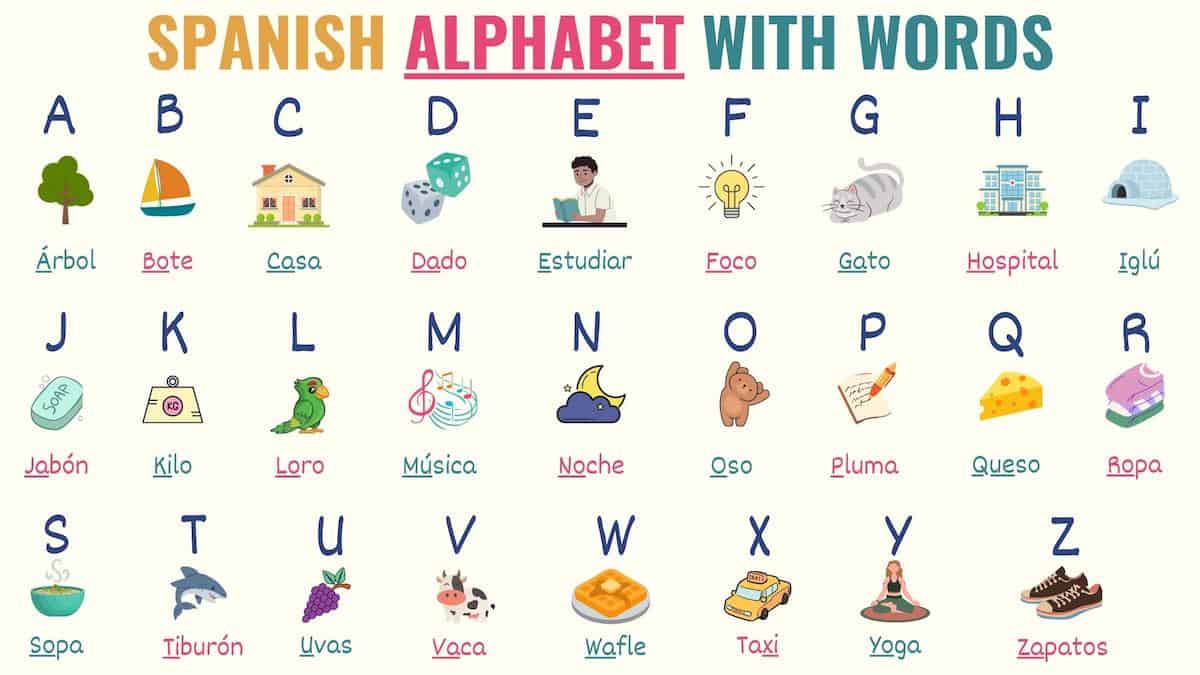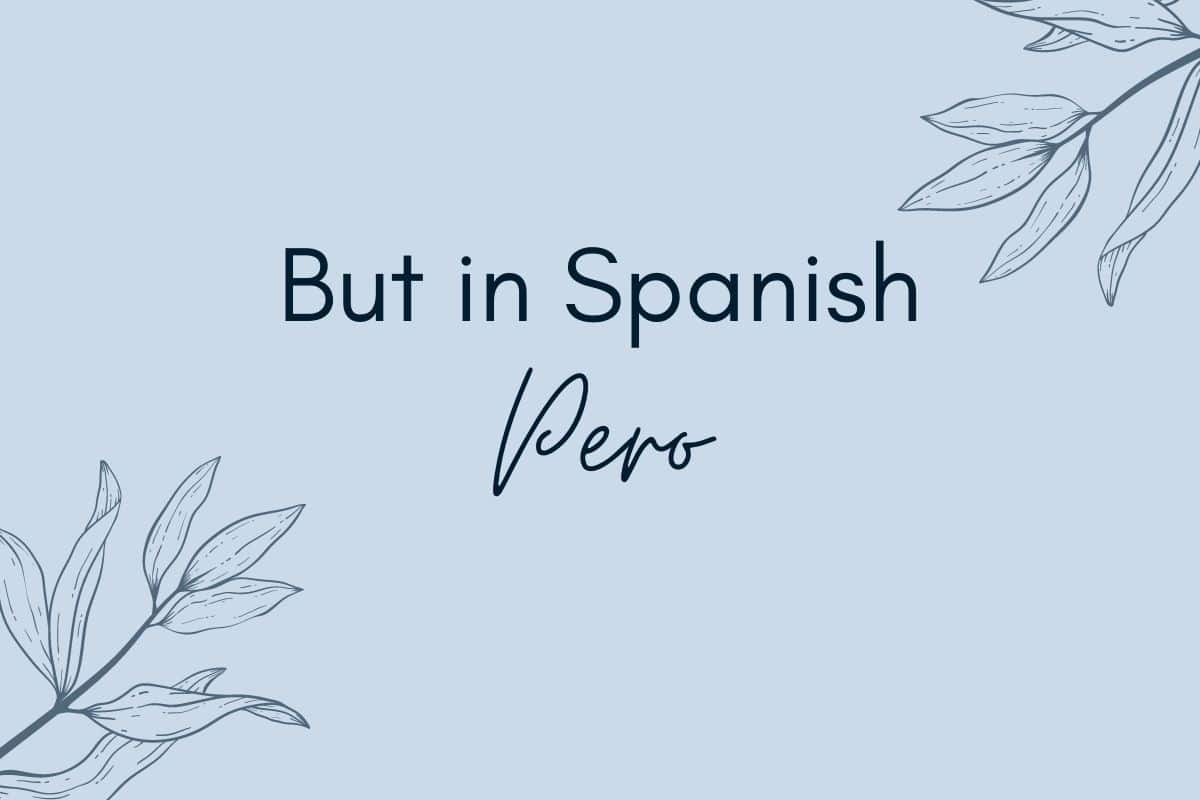But in spanish language – Pero en Español, “but” in Spanish, plays a multifaceted role in the language, connecting contrasting ideas, reflecting cultural values, and serving as a key component of effective communication. Its usage extends beyond its grammatical function, carrying nuances that shape the way Spanish speakers express themselves.
This exploration of “pero” delves into its grammatical structure, usage in different contexts, cultural significance, and comparative analysis, providing a comprehensive understanding of this essential Spanish conjunction.
Language Structure: But In Spanish Language

In Spanish, “pero” is a conjunction that is used to connect contrasting ideas or clauses. It is equivalent to the English word “but.” “Pero” can be used to connect two independent clauses, or it can be used to connect a dependent clause to an independent clause.
When “pero” connects two independent clauses
When “pero” connects two independent clauses, it typically means that the second clause contradicts or contrasts with the first clause. For example:
Me gusta el helado, pero no me gusta el chocolate.
(I like ice cream, but I don’t like chocolate.)
When “pero” connects a dependent clause to an independent clause
When “pero” connects a dependent clause to an independent clause, it typically means that the dependent clause provides an exception or limitation to the independent clause. For example:
Quiero ir al cine, pero tengo que estudiar.
(I want to go to the movies, but I have to study.)
Difference between “pero” and other Spanish conjunctions
“Pero” is similar to other Spanish conjunctions like “aunque” and “sin embargo,” but there are some subtle differences between them.
- Aunqueis used to connect two clauses that are in contrast, but the contrast is not as strong as it is with “pero.” For example:
Aunque no me gusta el chocolate, me gusta el helado.
(Even though I don’t like chocolate, I like ice cream.)
- Sin embargois used to connect two clauses that are in contrast, but the contrast is even stronger than it is with “pero.” For example:
Me gusta el helado, sin embargo, no me gusta el chocolate.
(I like ice cream, however, I don’t like chocolate.)
Usage in Different Contexts

The word “pero” is a versatile conjunction that can be used in a variety of contexts, both formal and informal. In formal speech, “pero” is typically used to connect two contrasting ideas or to introduce an objection or reservation. For example, a speaker might say, “El proyecto es innovador, pero es caro” (The project is innovative, but it is expensive).
In informal speech, “pero” can be used more colloquially to mean “but” or “however.” For example, a speaker might say, “Me gusta la película, pero no me gusta el final” (I like the movie, but I don’t like the ending).
Nuances of Usage
The nuances of using “pero” can vary depending on the register of Spanish being used. In general, “pero” is more formal than “pero que” and “sino que.” “Pero que” is often used in exclamations, while “sino que” is used to introduce a correction or contrast.
Tips for Effective Usage
Here are some tips for using “pero” effectively in writing and speaking:
- Use “pero” to connect two contrasting ideas or to introduce an objection or reservation.
- Use “pero que” in exclamations.
- Use “sino que” to introduce a correction or contrast.
- Avoid using “pero” too frequently, as it can make your writing or speech sound choppy.
Cultural Significance
In Spanish-speaking communities, the word “pero” holds immense cultural significance. It serves as a powerful connective tissue, weaving together the values, perspectives, and artistic expressions of these cultures.
The ubiquity of “pero” in Spanish-speaking cultures is a testament to its multifaceted nature. It functions as a versatile tool for expressing a wide range of emotions, from disappointment to resignation to acceptance. Its presence in everyday speech, literature, music, and other forms of cultural expression reflects the complex and nuanced worldview of Spanish-speaking peoples.
In Literature, But in spanish language
“Pero” plays a pivotal role in Spanish literature, shaping the narrative arc of countless stories. It can serve as a catalyst for conflict, a turning point in a character’s journey, or a poignant reflection on the human condition.
In Miguel de Cervantes’s masterpiece “Don Quixote,” the use of “pero” highlights the protagonist’s unwavering idealism in the face of adversity. Despite the numerous setbacks he encounters, Don Quixote’s faith in his chivalrous ideals remains unshaken, as evidenced by the frequent appearance of “pero” throughout the novel.
In Music
In the realm of Spanish-language music, “pero” finds expression in a multitude of genres, from traditional ballads to contemporary pop songs. It adds depth and emotional resonance to lyrics, conveying a range of sentiments from longing to regret to resilience.
In the iconic song “Pero Me Acuerdo de Ti” by Mexican singer-songwriter Juan Gabriel, “pero” serves as a poignant reminder of a lost love. The lyrics, “Pero me acuerdo de ti / En cada amanecer” (But I remember you / In every sunrise), capture the bittersweet emotions of remembrance and longing.
Comparative Analysis
The Spanish conjunction “pero” has equivalents in various other languages, each with its own grammatical function and cultural significance. By comparing “pero” to its counterparts, we can gain insights into cross-cultural communication.
In English, “but” is the most common equivalent of “pero.” Both conjunctions are used to connect two contrasting clauses or sentences. However, “pero” is also used in Spanish to introduce an unexpected or surprising fact, while “but” is not typically used in this way in English.
Grammatical Function
- In Spanish, “pero” can be used to connect two independent clauses, indicating a contrast or opposition between them.
- In English, “but” can also be used to connect independent clauses, but it can also be used to connect a dependent clause to an independent clause.
Cultural Significance
- In Spanish, “pero” is often used to soften the impact of a negative statement or to express a polite disagreement.
- In English, “but” is not typically used in this way, and can instead be perceived as more confrontational.
These comparisons highlight the importance of understanding the cultural context of language when communicating across cultures. The different usage and significance of “pero” and its equivalents in other languages can lead to misunderstandings if not taken into account.
Final Conclusion
In conclusion, “pero” en Español is not merely a conjunction but a linguistic and cultural cornerstone. Its versatility and nuanced usage offer insights into the complexities of Spanish-speaking communities and the intricacies of cross-cultural communication. Understanding the multifaceted nature of “pero” empowers learners and facilitates deeper engagement with the richness of Spanish language and culture.
FAQ Insights
How does “pero” differ from other Spanish conjunctions like “aunque” and “sin embargo”?
“Pero” is used to connect contrasting ideas or clauses, while “aunque” introduces a concession or contrast that does not fully contradict the preceding statement. “Sin embargo” is similar to “pero” but often implies a stronger contrast or opposition.
Can “pero” be used in both formal and informal Spanish?
Yes, “pero” is used in both formal and informal contexts, although its usage may vary slightly depending on the register.
How can I use “pero” effectively in writing and speaking?
To use “pero” effectively, consider the context and tone of your communication. Use it to connect contrasting ideas or clauses, and pay attention to its placement within sentences to ensure clarity.